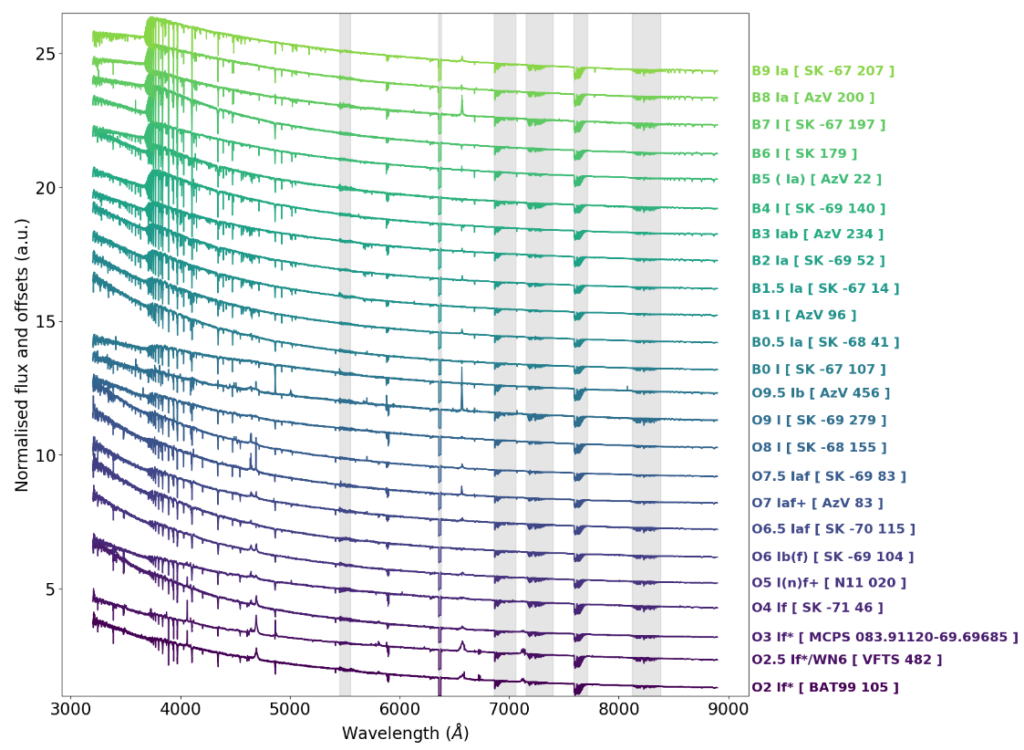X-Shooting ULLYSES: massive stars at low metallicityI. Project Description
Jorick S. Vink, A. Mehner, P. A. Crowther, A. Fullerton, M. Garcia, F. Martins, N. Morrell, L.M. Oskinova, N. St-Louis, A. ud-Doula, A.A.C. Sander, H. Sana, J.-C. Bouret, B. Kubátová, P. Marchant, L.P. Martins, A. Wofford, J. Th. van Loon, O. Grace Telford, Y. Götberg, D.M. Bowman, C. Erba, V.M. Kalari, M. Abdul-Masih, T. Alkousa, F. Backs, C.L. Barbosa, S.R. Berlanas, M. Bernini-Peron, J.M. Bestenlehner, R. Blomme, J. Bodensteiner, S.A. Brands, C.J. Evans, A. David-Uraz, F.A. Driessen, K. Dsilva, S. Geen, V.M.A.Gómez-González, L. Grassitelli, W.-R. Hamann, C. Hawcroft, A. Herrero, E.R. Higgins, D. John Hillier, R. Ignace, A.G. Istrate, L. Kaper, N.D. Kee, C. Kehrig, Z. Keszthelyi, J. Klencki, A. de Koter, R. Kuiper, E. Laplace, C.J.K. Larkin, R. R. Lefever, C. Leitherer, D.J. Lennon, L. Mahy, J. Maíz Apellániz, G. Maravelias, W. Marcolino, A. F. McLeod, S.E. de Mink, F. Najarro, M. S. Oey, T.N. Parsons, D. Pauli, M.G. Pedersen, R.K. Prinja, V. Ramachandran, M.C. Ramírez-Tannus, G.N. Sabhahit, A. Schootemeijer, S. Reyero Serantes, T. Shenar, G.S. Stringfellow, N. Sudnik, F. Tramper, and L. Wang
Observations of individual massive stars, super-luminous supernovae, gamma-ray bursts, and gravitational-wave events involving spectacular black-hole mergers, indicate that the low-metallicity Universe is fundamentally different from our own Galaxy. Many transient phenomena will remain enigmatic until we achieve a firm understanding of the physics and evolution of massive stars at low metallicity (Z). The Hubble Space Telescope has devoted 500 orbits to observe ∼250 massive stars at low Z in the ultraviolet (UV) with the COS and STIS spectrographs under the ULLYSES program. The complementary “X-Shooting ULLYSES” (XShootU) project provides enhanced legacy value with high-quality optical and near-infrared spectra obtained with the wide-wavelength coverage X-shooter spectrograph at ESO’s Very Large Telescope. We present an overview of the XShootU project, showing that combining ULLYSES UV and XShootU optical spectra is critical for the uniform determination of stellar parameters such as effective temperature, surface gravity, luminosity, and abundances, as well as wind properties such as mass-loss rates in function of Z. As uncertainties in stellar and wind parameters percolate into many adjacent areas of Astrophysics, the data and modelling of the XShootU project is expected to be a game-changer for our physical understanding of massive stars at low Z. To be able to confidently interpret James Webb Space Telescope (JWST) spectra of the first stellar generations, the individual spectra of low Z stars need to be understood, which is exactly where XShootU can deliver.

arXiv: 2305.06376
